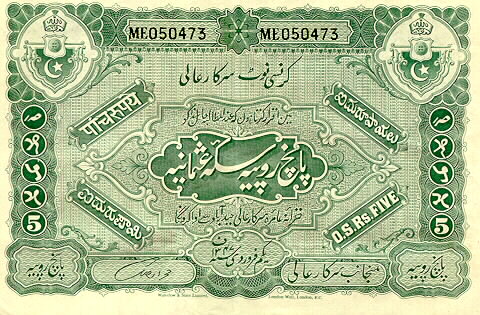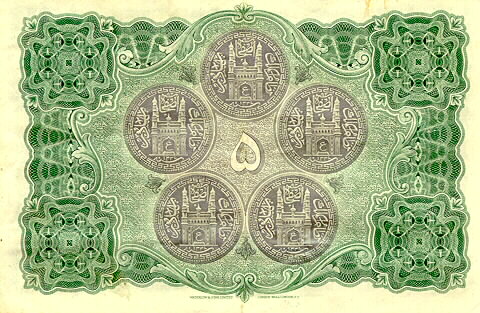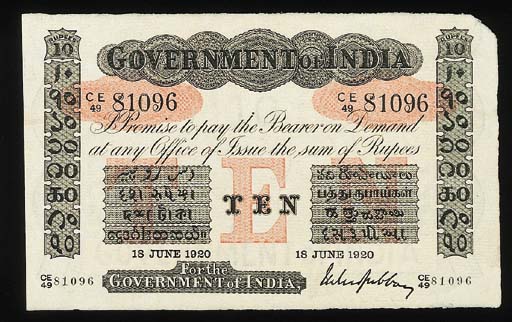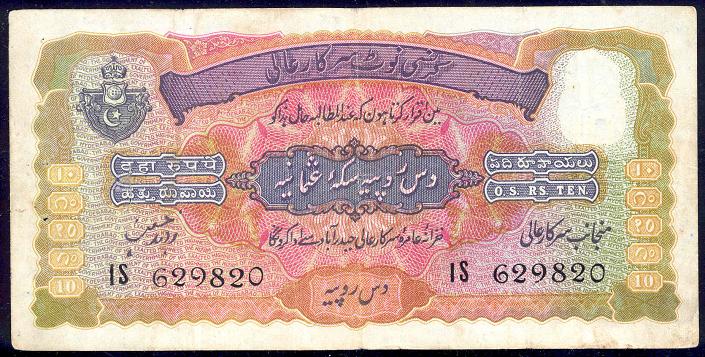

Five-rupee note from Hyderabad, labeled multilingually and dated Feb. 1, 1347 A.H. (1928/9)
Source: http://www.fortunecity.com//victorian/coldwater/9/hyd1.html
(downloaded Nov. 1999)
"Hyderabad was the only state which had a full fledged paper currency which came into existence in 1916, and enjoyed wide circulation till 1952. The notes were printed till 1939 by Waterlow & Sons, and then onwards by the Security Press at Nasik. The notes are dated in "Fasli" years, an era which was current in the Deccan, associated closely with the Hijri era. The notes are printed entirely in Urdu and other languages which were current in the state, like Kannada, Telgu and Marathi. They are signed by the "Moin-ul-Mulam" or Finance Minister. Sir R.R.Clancey, Hyder Nawaz Jung, Fakhre-yar Jung are a few of the signatories." (http://www.fortunecity.com//victorian/coldwater/9/princely.html)
On the back of the same five-rupee note are five images of the Char Minar , the symbol of Hyderabad City. Probably this helped illiterate people to use the notes.


And here's what a British Indian ten-rupee note looked like in 1920
Source: http://www.christies.com/LotFinder/search/LotDetail.asp?intObjectID=2092819&SE=CMWCAT02+92143+%2D914657078+&QR=M+1+32+Aqc0000900+90455++Aqc0000900+&entry=india&T=Lot&Ti=&P=&SR=All&MF=&DF=&MT=&DT=&SU=1&RQ=True&AN=33
(downloaded June 2001)
"Government of India, 5-Rupees, 28 December 1915, A (Cawnpore), black
and white, value in pale red at centre, Gubbay signature (PA 6d), 10-Rupees,
18 June 1920, no letter, colour and design as previous (PA 10K), almost
extremely fine and good extremely fine, scarce (2)."


A later Hyderabad ten-rupee note, issued during the decade before Independence
Source: ebay, May 2007
== Indian Routes index == Indian Routes sitemap == Glossary == FWP's main page ==